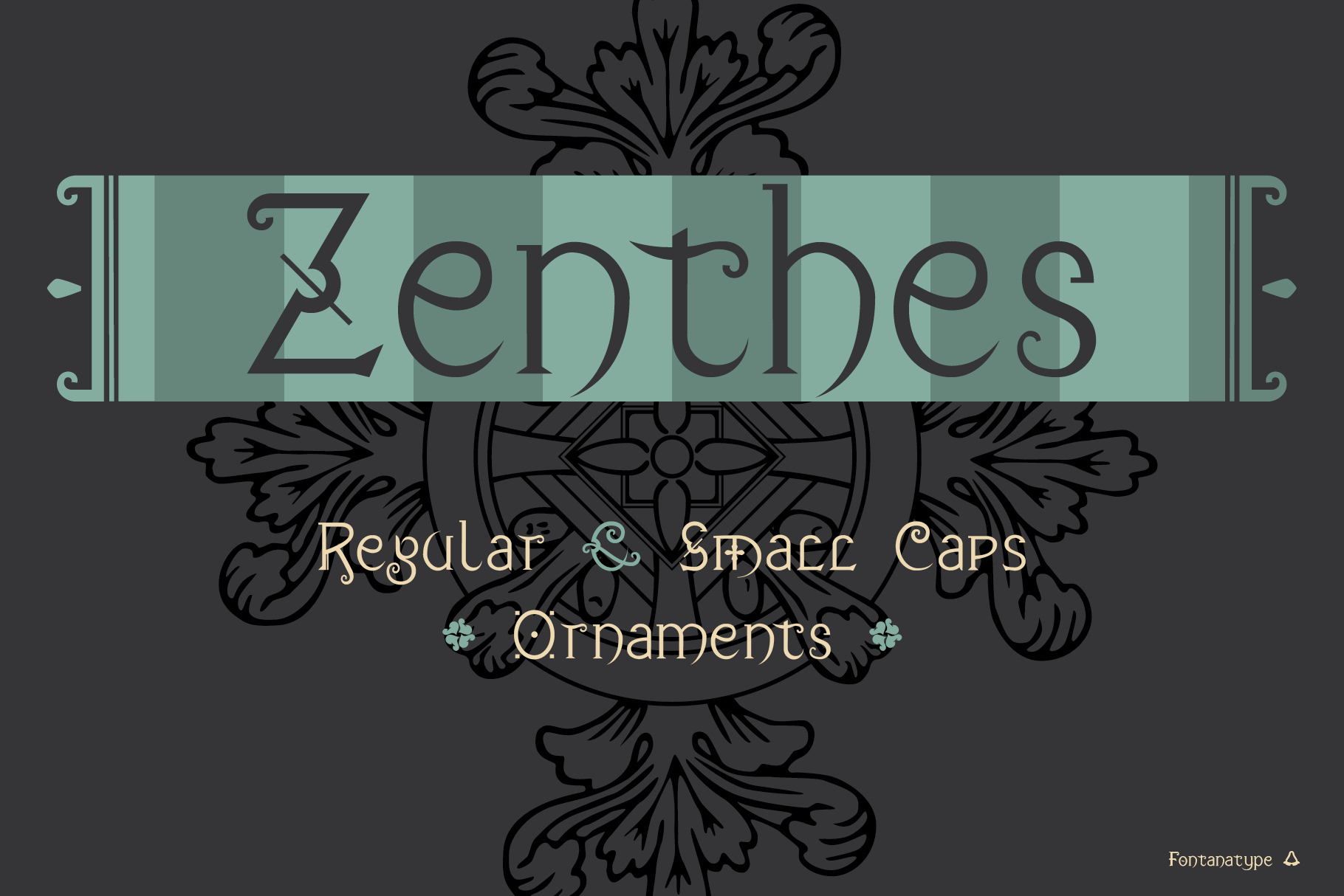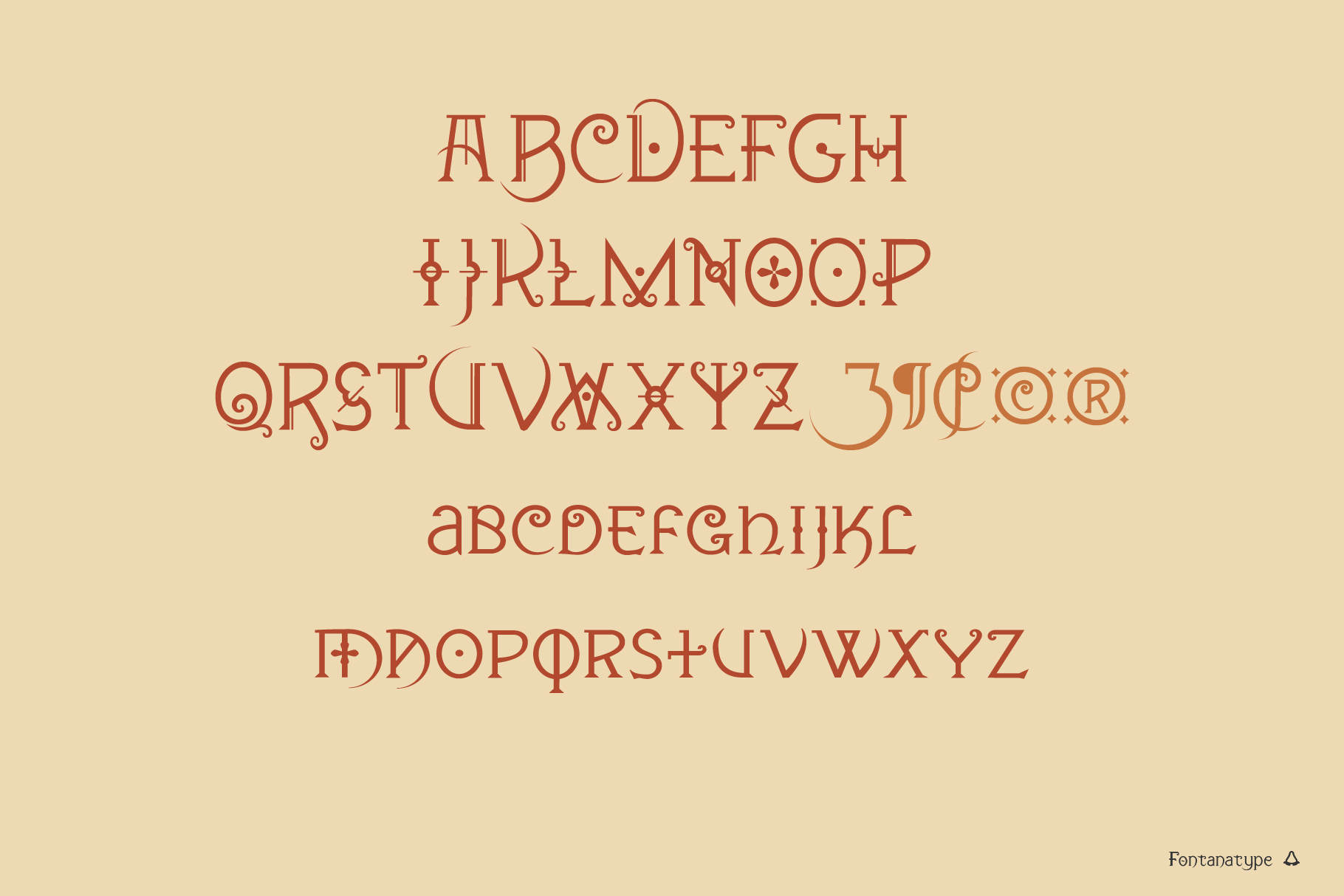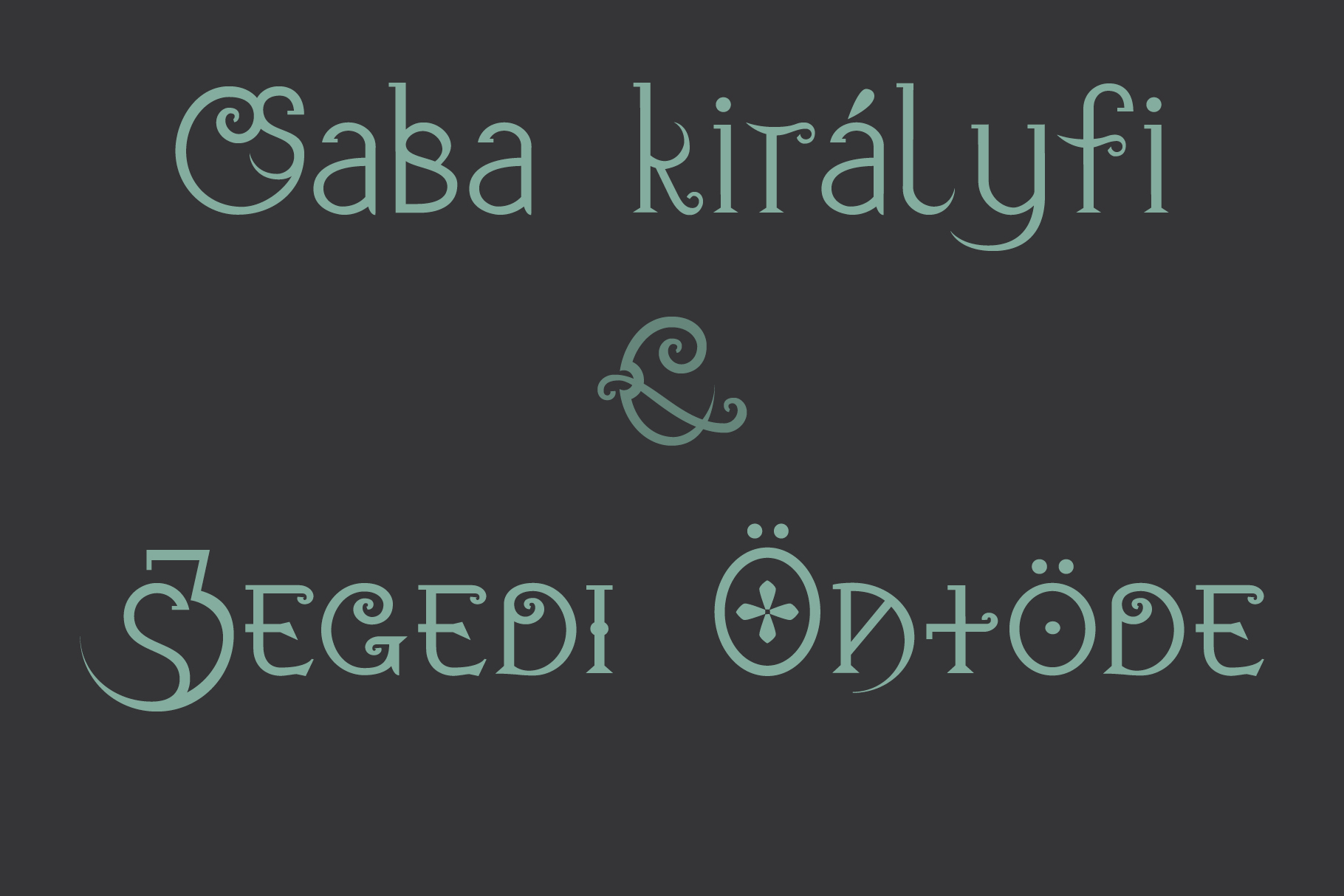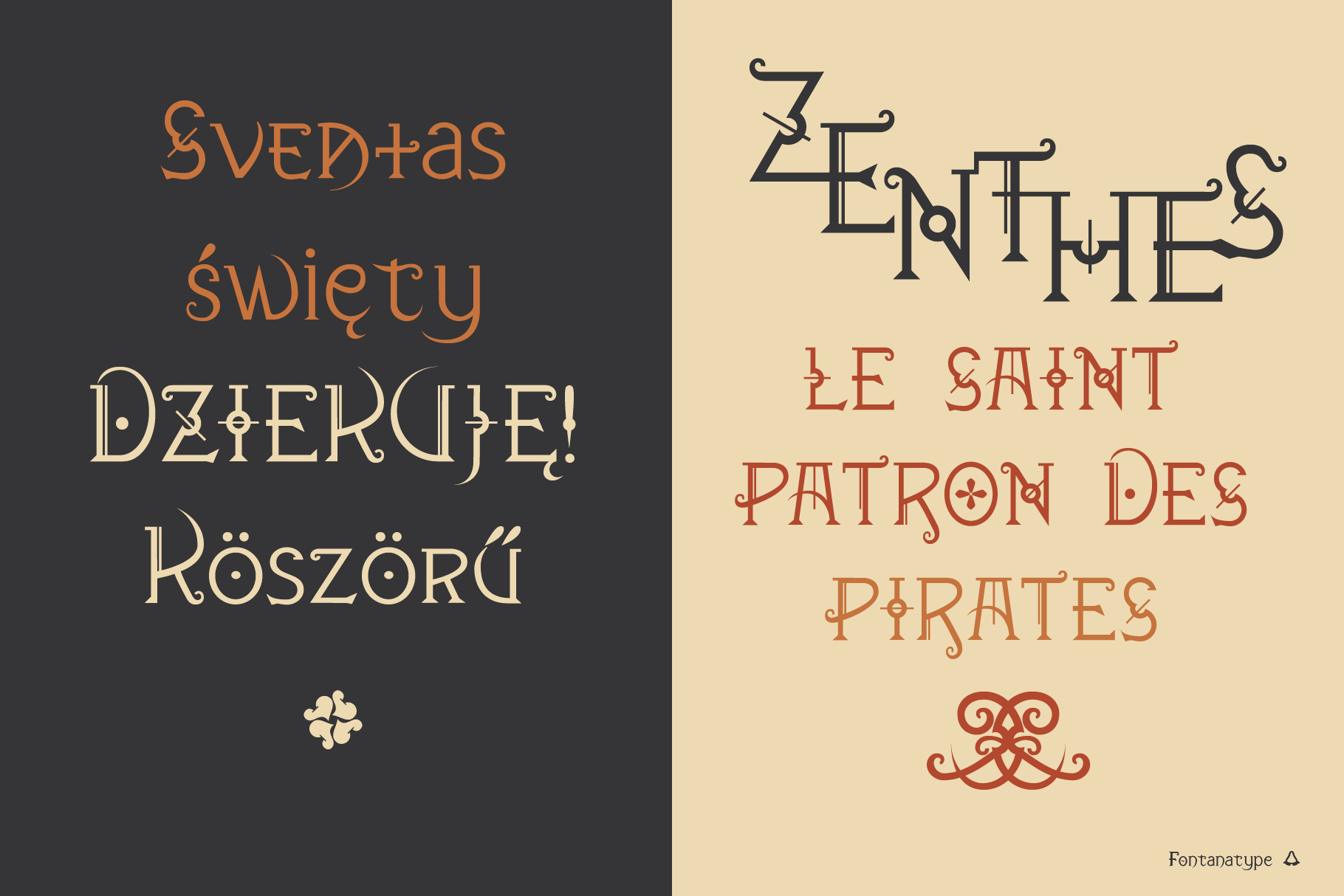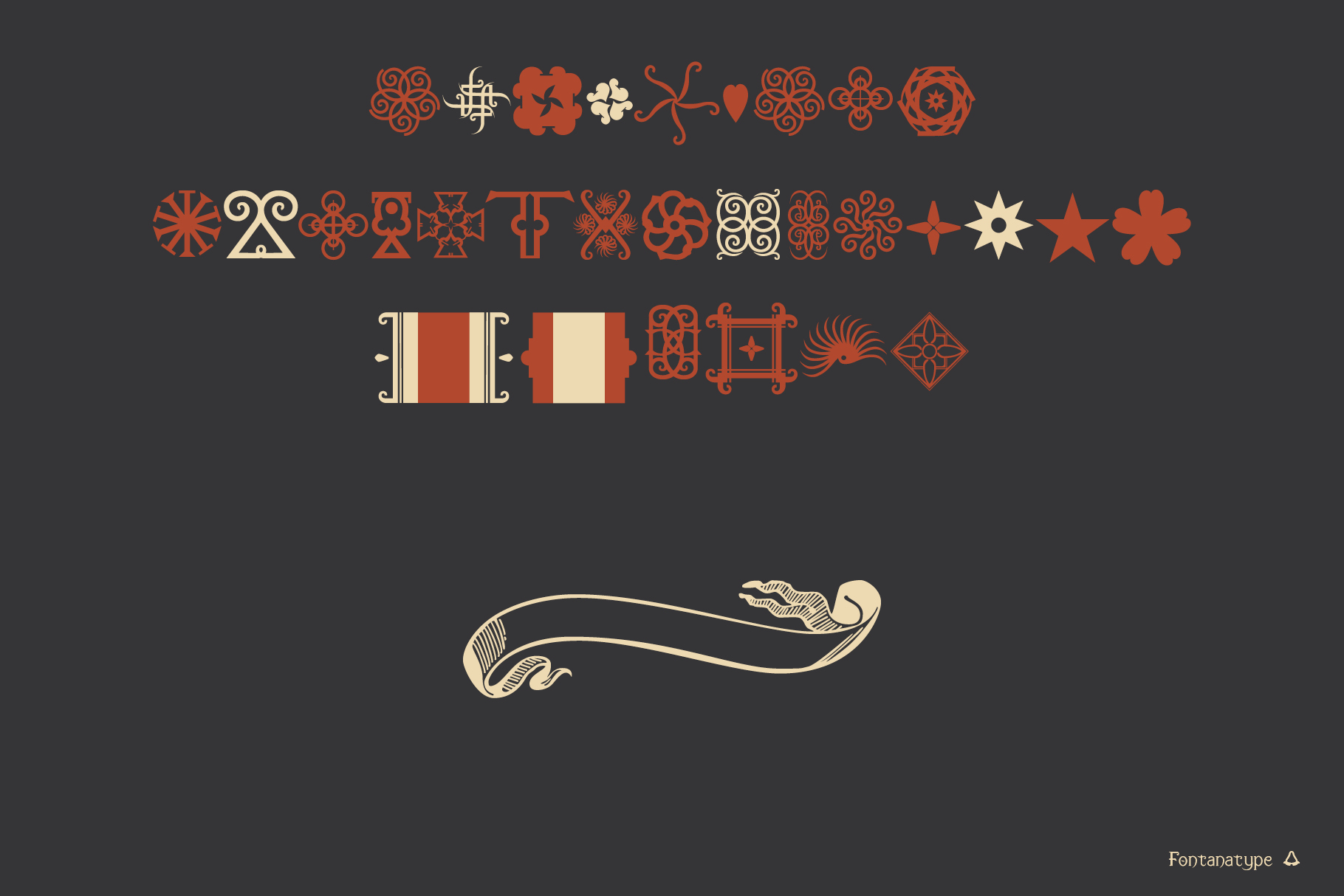Zenthes
Done in: 04.2003 | by Amondo Szegi | Customer: Creative Market | 1 weight, 2 styles | $29
Zenthes comes with a complete set of lowercase and uppercase characters, a large range of punctuation ligatures, numerals, and multilingual support. Zenthes is the ancient name of Szentes, the hometown of Amondó Szegi. As this choice of name suggests, the motivation of this typeface is highly personal. The basic idea for creation was influenced by a palm tree that appears in the coat of arms of the town. This motif is quite a puzzle for Szentes is situated in the center of the Hungarian Great Plane where no such tree is indigenous. As the locals like to say the palm tree would stand for their persistence and vitality, their ability to survive the difficulties. ‘I first saw the coat-of-arm of Szentes in the Archives on an old certificate as during the Communist Regime the use of such historical blazon was forbidden. I remember the yellow certificate with the palm tree; it had a touch of mystery as if some pirates had hidden it. Pirates in the mid of the Great Plane? What a strange association. Just as strange as the appearance of a palm tree in the coat-of-arm…’- comments Amondó. This sense of history just like the affinity for mystery and the cultural plurality is an ever-present feature of Amondo’s work. We can often detect very different roots in his type design: typical Hungarian elements, allusions to the old masters of typography and playful reinterpretations of variant cultures (e.g. the Maya or Sanskrit) make an interesting mix in his personality. The richly decorated letterforms of Zenthes, and the reference to different stylistic times, (to the Gothic, the Baroque, and the secession) are important characteristics of this typeface. It is important to pay attention to the special Hungarian ligatures, such as the double consonants as ‘SZ’ or the word ‘és’ (and). The Zenthes family is a very new type; some characters are still under creation. It is interesting to see though that together with the first letterforms Amondo has also designed a set of symbols. For him, the creation of these ornaments offered a great possibility to play with the central visual element (the stylized palm tree); which helped the development of a consistent visual language of this type.
(Krisztina Somogyi)
on Creative Market

